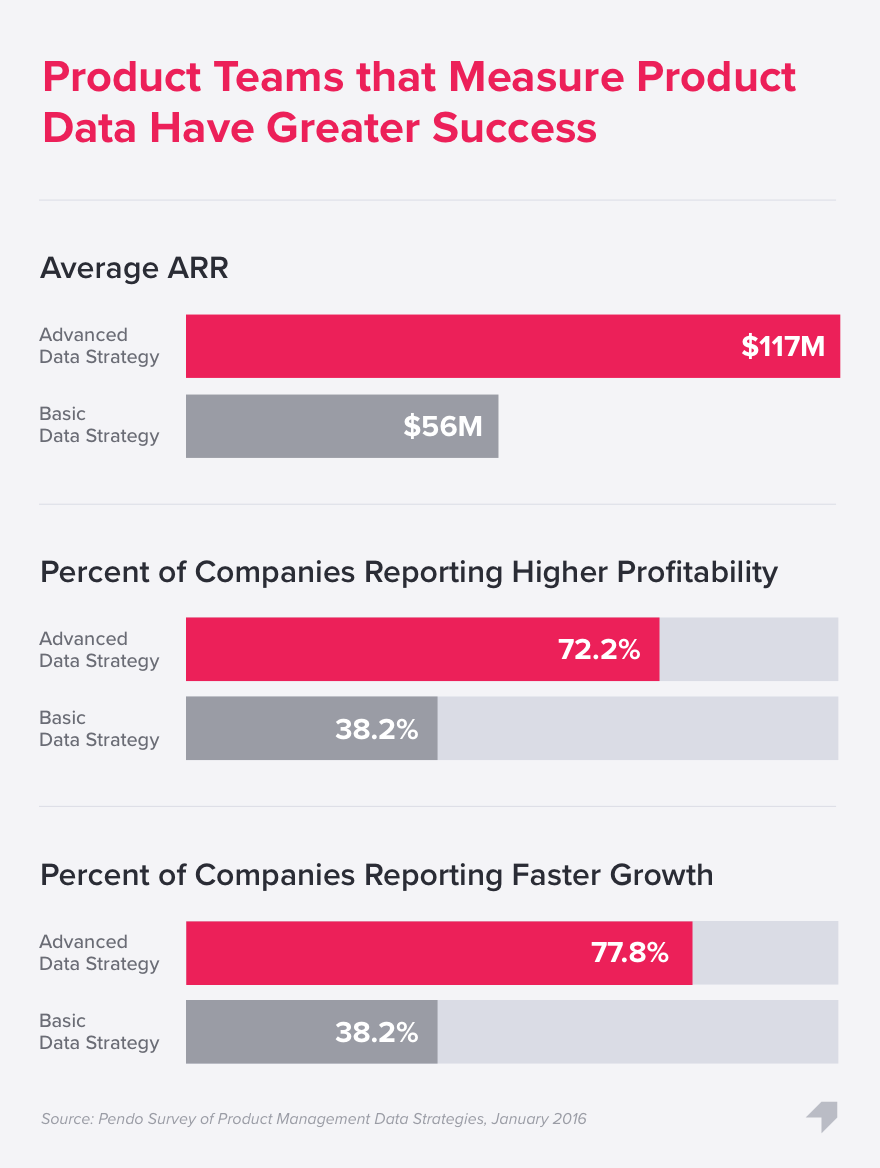Hint: It involves data.

Yesterday, the folks at MindTheProduct posted the results of a short, informal survey of product managers. They asked one basic, open-ended question: “What’s your #1 biggest product management challenge right now?” There were a range of concerns that were reported, but the top challenge far and away was that product managers don’t know if they’re building the right things. They don’t know if the products they’re building are meeting customer needs, and they don’t know if the features they prioritize are ones that customers value. A sample response cited in the article was:
“I’m trying to make decisions about how to improve the product with no data about which features of the product are most valuable to users.”
To us, this is both crazy and unsurprising. This was the same frustration that led our founders to build Pendo three years ago. We’ve instrumented many aspects of our businesses and our lives, yet so many product managers are still flying blind when it comes to understanding their customers and how their products are used.
Product management is an exercise in maximizing resources. You only have so many development hours available. What is the cost of building something that delivers no value? This is especially frustrating when there’s a great source of customer data readily available – the product itself. Pendo simplifies the collection of user data, but there are a lot of ways that product managers can capture valuable usage data. This is why we’ve argued that building a product management data strategy should be a key prerequisite to any new development project.
There is significant ROI associated with better data collection as well. In our own survey of product managers earlier this year, we found a very clear correlation between the data that companies collect about their products and the performance of their products. Companies that collected and measured more product data had nearly 2x higher annual recurring revenue (ARR) for their products. In addition, companies with stronger product data strategies reported faster growth, greater user login frequency, and lower levels of customer churn.

The results we saw were really compelling, but at the same time, they were kind of a “no-brainer.” Of course measuring what users actually do in your product will help you prioritize and deliver features that bring them value. What’s surprising is how many organizations don’t even do basic measurement in their applications. In our survey, nearly 25% of respondents reported collecting absolutely no product data at all. This new survey from MindTheProduct pretty clearly indicates that things haven’t improved. Give us more product data!
To see more about our product management survey, check out the Webinar on 5 Data Habits of Effective Product Teams, or read the survey results directly.


